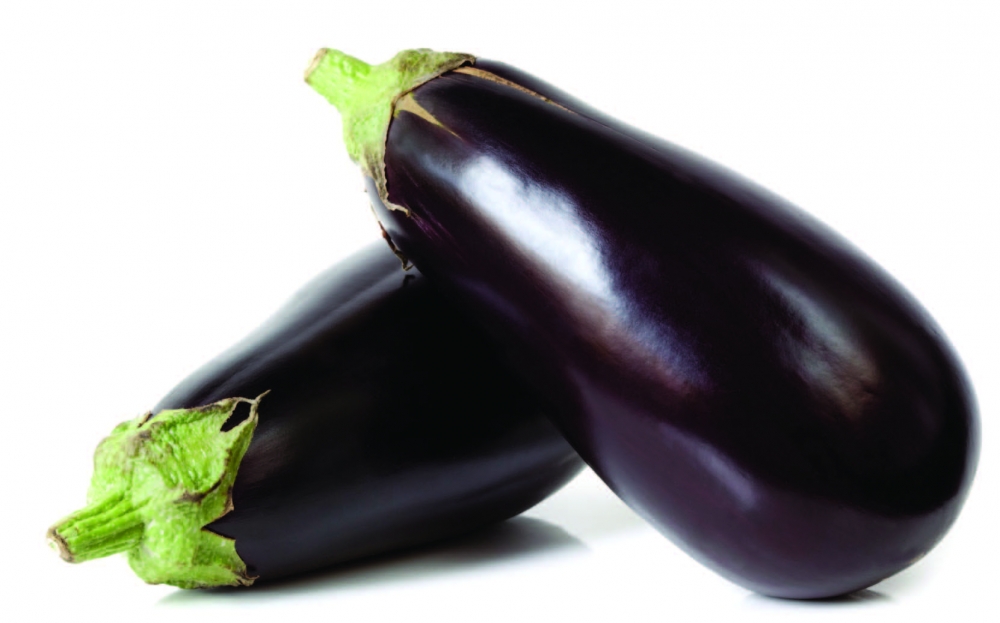Aubergine and Halloumi kebabs with cucumber raita
Go for a meaty meal without any meat at all! The aubergine and halloumi cheese pair up to create a vegetarian starter or main course that won't leave you wanting. Gaby Holland shares her secrets.

Ingredients
- 3 tbsp olive oil
- 2 cloves garlic, crushed
- 1 large lemon, juice only
- 2 tbsp cumin seeds
- 1 tbsp ground coriander
- 1 tbsp paprika
- 1 large aubergine, halved and each half cut into 18 equal-sized cubes
- 200g halloumi cheese, cut into 12 large cubes
Cucumber raita
- Greek yoghurt
- ½ cucumber
- Handful mint
- Salt and pepper
- Pita bread
- Tomato salad
Method
- If using wooden kebab sticks soak for a couple of hours before using.
- Place all ingredients for the kebabs in a bowl and leave to marinate for a few hours. Thread each kebab with alternate cubes of aubergine and halloumi (3 cubes of aubergine and 2 cubes of halloumi).
- Place on a medium hot barbecue or grill pan and cook for 10 mins or until the vegetables are cooked and the cheese is hot and oozing.
- Mix the ingredients for the raita together and serve with the hot kebabs, a tomato salad and warm pita bread.
Shiny, purple aubergines

Botanically, the aubergine belongs to Solanaceae family and named as Solanum melongena. This perennial plant is native to Indian subcontinent and now grown in many tropical and semi tropical regions. Aubergines belong to the nightshade family of vegetables, which also includes tomatoes, sweet peppers and potatoes. The aubergine, is also known as the eggplant in the US and in south and southeast Asia and in South Africa as brinjal (brungiel in Maltese). Although we know it as a vegetable it is actually a fruit, like all other edible members of the nightshade family.
Aubergines vary in colour and shape but the most common ones are a beautiful, shiny deep purple vegetable and shaped like a large egg (hence their American name). They have been cultivated for years in areas of the world such as China and India (their first cultivation was recorded in China 5 BC).
The aubergine is used widely in Mediterranean African and Asian cooking, where it is prepared, cooked and presented in many different ways. Its flesh is soft and spongy with a slightly bitter and nutty taste that soaks up the flavours of the sauce or marinade that it is cooked in. Aubergines soak up lots of oil when fried but salting the vegetable will reduce the amount of oil absorbed. Simply sprinkle the raw vegetable with salt - leave for 30 minutes, rinse and squeeze out the excess water.
The aubergine can be used in many different recipes and cooked in various ways. It is the star ingredient in many dishes including parmigiana, moussaka, vegetable lasagne, roasted vegetables, and can also be stir fried, steamed, stewed and pureed into delicious dips and sauces.
Vegetarians use it as a meat substitute because of its texture and bulk. The aubergine’s nutritional value and benefits is high as it provides vitamin B1, vitamin B3, vitamin B6, vitamin C and vitamin K, as well as essential nutrients including beta-carotene, calcium, iron, potassium, zinc and fibre. This particular nightshade vegetable benefits the health as it can help to fight against harmful diseases including cancer and heart disease. Many believe that nightshade vegetables can increase inflammation of the joints and therefore should not be eaten by sufferers of osteoarthritis.
Fun Facts
- According to a 5th century Chinese scroll, fashionable Chinese women used to make a dye out of the skin of purple eggplants and polish their teeth with it until they were a shiny gray.
- Eggplant and other members of the nightshade family may worsen the symptoms of arthritis.
- Like all other edible members of the nightshade family, the eggplant is a fruit.
- An eggplant is almost 95% water.


